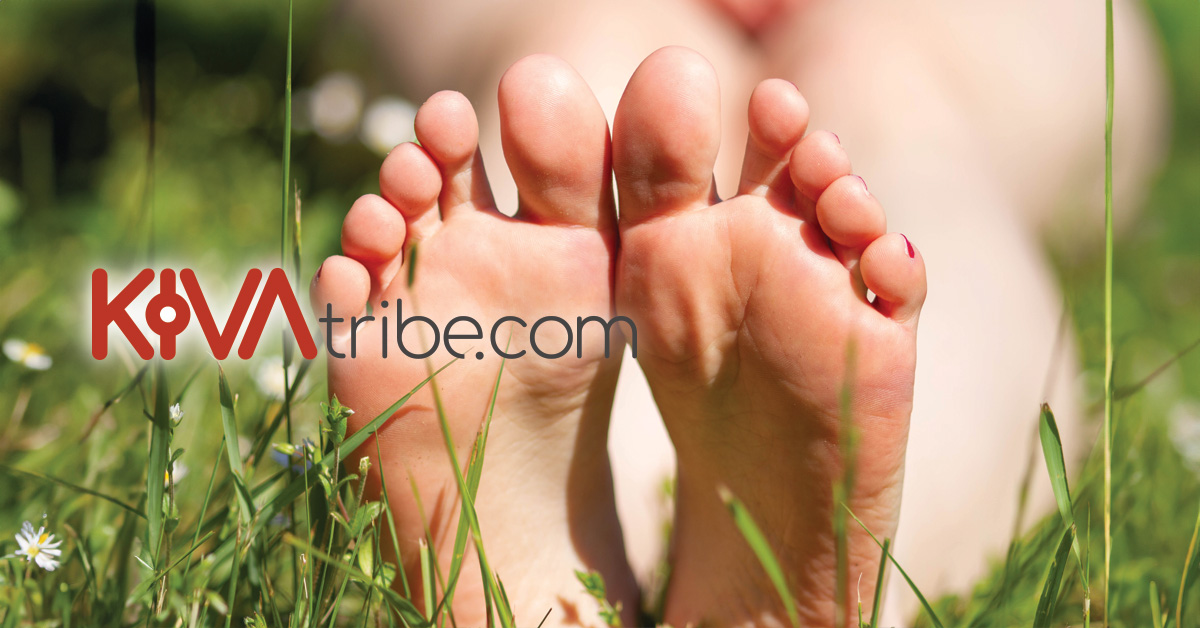
What Type of Foot Arch do I Have?
Here we’ll explain how to find out what type of foot arch you have and what it means.
The Arches of the Foot
In physiological terms, there are three arches under the foot; two longitudinal arches, which run the length of the foot, and one transverse arch which runs across the width of the foot.
The foot arches are a group of muscles, tendons and ligaments that absorb impact as we walk and run.
Arch Height
When we talk about arch height, we’re usually referring to how much space there is underneath the middle of your foot when standing. Arch height is usually described as high, normal, or low.
Those with high arches have a lot of space underneath the middle of their foot when standing, whilst those with low arches have very little. Normal arches are somewhere in between.
Flat Feet
Flat feet means the entire sole of the foot touches the floor. This can either be genetic, where the arch never developed from childhood (babies naturally have flat feet and only develop arches between the ages of 3 to 10), or alternatively flat feet can be acquired as an adult, when they are often referred to as fallen arches.
Fallen Arches
Fallen arches are incredibly common, and affect about 23% of adults.¹
Whilst there is much debate about the cause of fallen arches, or ‘flexible flatfoot’, with various sources proposing genetics, muscular imbalances, obesity, foot ligament problems, injury, arthritis, muscular dystrophy and some types of neuropathy¹, Dr Peter Francis, sports scientist, believes that for most people, fallen arches are caused by weak arch muscles, which in turn could be partly due to footwear choices.²
This belief is consistent with scientific research, which shows that when the intrinsic foot muscles are anaesthetised, and therefore become inactive, the arch drops.³
Why Does Arch Height Matter?
If our arch height is very high or very low, it may affect the way we walk, leading to further problems.
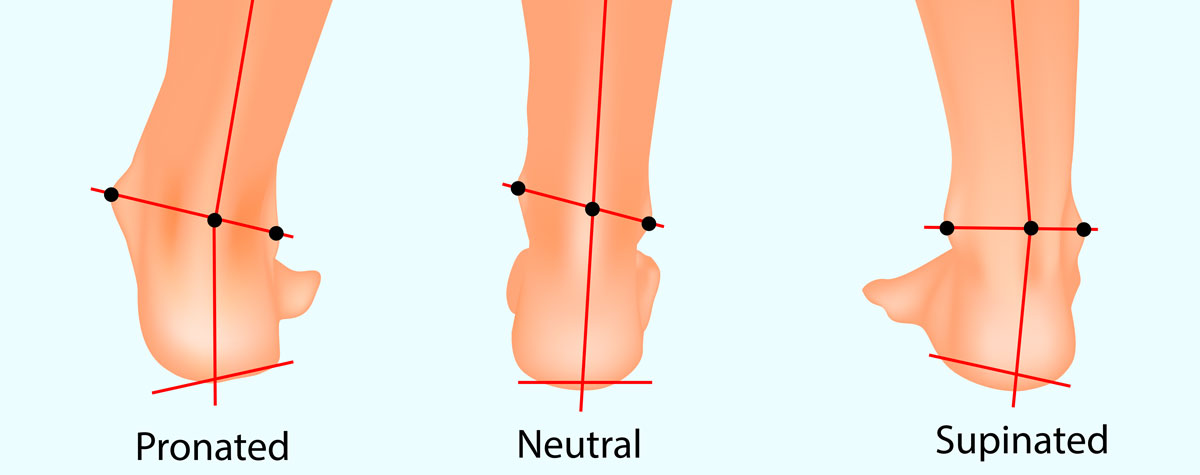
High arches can cause excessive supination (the natural rolling outward motion of our feet early in the gait cycle), which can contribute to plantar fasciitis, metatarsalgia, and heel pain.⁴
Low arches contribute to excessive pronation (the natural rolling inward motion of our feet late in the gait cycle) and can contribute to the development of plantar fasciitis, arch and heel pain.⁴ They can also contribute to musculoskeletal pain in the leg, knee and hip.¹
How to Check Your Arch Height
- Get a piece of card that’s large enough to fit your entire foot. Coloured card is useful for this experiment.
- Have your card ready next to you in the bathroom while you wet your feet – but not too wet, too much water and you might find it hard to see your footprint.
- Step onto the card with wet feet so that you leave a footprint.
- Repeat with the other foot.
If you can see almost the entire bottom of your foot in the footprint, you have low arches. If you can see about half of the middle section of your arch, you have normal arches. If you see very little footprint between the balls of your feet and your heel, you have high arches.
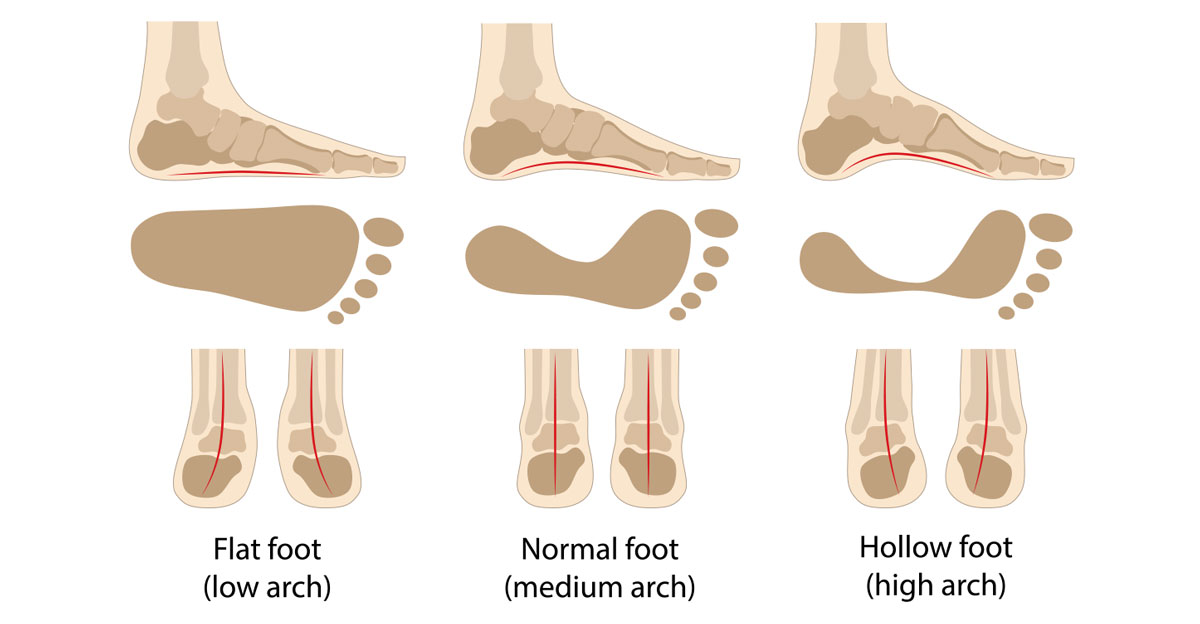
What To Do if You’re Concerned About Your Arches
Katy Bowman, biomechanist, points out that it doesn’t matter whether your arches are high or low, you need to work on flexibility. Those with high arches also need to work on lower leg strength, whilst those with low arches need to work on hip mobility.⁵
Low Arches / Flat Feet
Christopher Ioannou, sports scientist, seconds Katy’s recommendation, emphasising that glute strength is key to rehab fallen arches. He adds that increasing calf and ankle mobility is also important, as is strengthening the intrinsic foot muscles.⁶
Research backs this up; for people with flat feet, exercises and time barefoot (both of which strengthen the intrinsic foot muscles) play an important role in treatment, as they improve both objective measures of foot function and subjective experience of foot health.⁷
Dr Ray McClanahan, podiatrist, explains that for many people with low or fallen arches, conservative treatment is sufficient, ie temporary arch support and exercises to strengthen the muscles.⁸
Do Shoes Affect Arch Height?
Low arches may be a sign that you need to address your footwear.
Dr Francis is not the only one who believes that conventional footwear plays a role in arch height. Dr McClanahan explains that conventional footwear destabilises the arch by displacing the big toe, which can contribute to weakened arch muscles and lower arch height.⁸
This theory is also consistent with scientific research, eg a study in 1995 found that flat feet are most common in those who wore shoes for long hours as children and those who started wearing shoes at a young age.⁹
Research also shows that people consistently wearing minimalist footwear also have lower rates of flat feet; people living in a community that wore only barefoot style sandals were 25 times less likely to have flat feet than urban Americans.¹⁰
Both Christopher Ioannou and Dr McClanahan point out that due to the potential for footwear to contribute to arch problems, careful transitioning to barefoot shoes is also advisable when dealing with low or fallen arches. Dr McClanahan also recommends the use of toe separators.
Dr Emily Splichal, podiatrist, agrees, suggesting that wearing barefoot shoes regularly and strengthening intrinsic foot muscles helps to prevent flat feet.¹¹
Arch Pain
If you’re experiencing pain in the arch of your foot, there are many possible causes.
According to Dr Splichal, arch pain can be caused by a range of factors like plantar fasciitis, flexible flatfoot (fallen arches), posterior tibial tendon dysfunction, peripheral neuropathies, muscle spasms, osteoarthritis, foot sores, stress fractures or ligament sprain.¹² This is why it’s important to get checked out by a health professional in order to find the underlying cause.
Dr Splichal recommends a number of things that can help with pain, several of which are consistent with the core programme that’s generally recommended by experts for the barefoot transition¹:
- Rest
- Ice
- Temp arch support
- Wear properly fitting shoes that have plenty of room for your toes
- Address your gait
- Massage your foot arches
- Incorporate stretches
- Start exercises to strengthen the intrinsic foot muscles
The Importance of Intrinsic Foot Muscles
Across the board, barefoot experts emphasise the importance of strengthening the intrinsic foot muscles for general foot health, prevention of foot issues and a wider range of health problems.
Dr Patrick McKeon says the strength of these muscles are often ignored by many health practitioners, who favour external arch support in the form of orthotics, which is most likely due to the lack of research and understanding of the role of these small foot muscles.¹³
But the message is clear – lower body mobility and foot strength have knock-on benefits, not only for your arches but for your general health.
For more information about strengthening your feet, see our article How to Strengthen Intrinsic Foot Muscles.




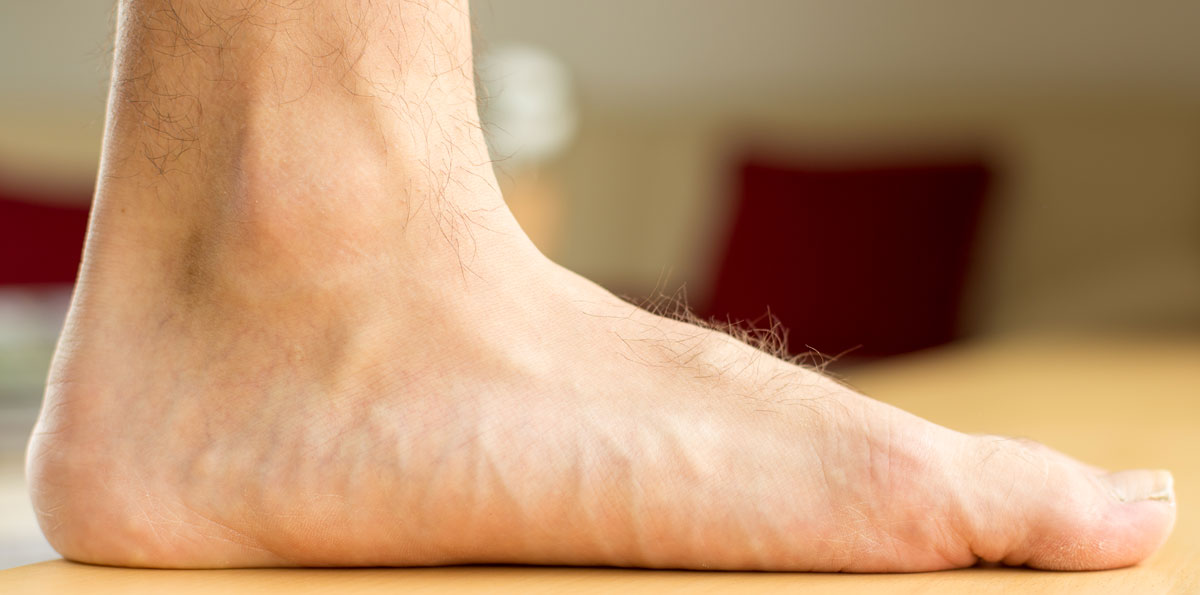
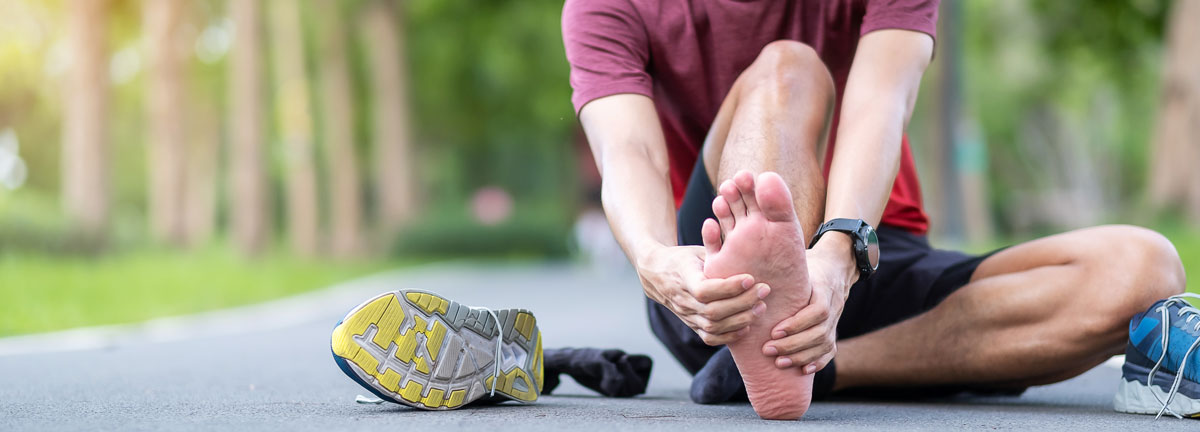
Get Social…